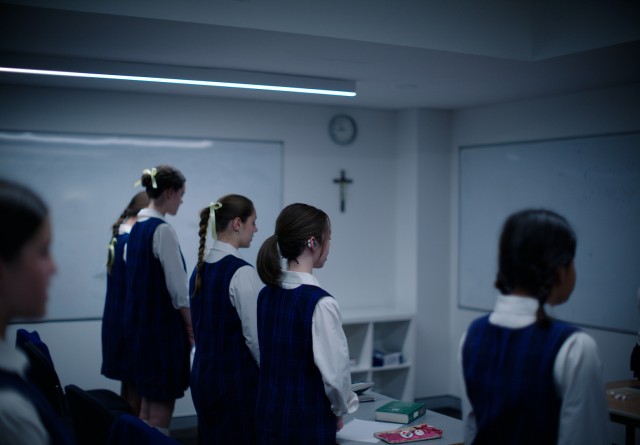The human brain does strange things when it’s faced with trauma. My family went through a horrific tragedy a decade ago and the most vivid, razor-sharp memories that have stuck with me are the small, seemingly insignificant moments from that day. Jabbing at the button in the lift. Greeting a neighbour with a smile through my tears. The oddly symmetrical puddle on the pavement as I ran towards the unknown. Processing trauma is not a universal, logical or linear experience. All you can hope for is that you can put yourself together after being broken into pieces and that the worst of the memories fall through the cracks. Inspired by Vladimir Nabokov’s novel Lolita, director Victoria Singh-Thompson explores the ways in which we process the worst kind of trauma through the lens of a hard-of-hearing teenage girl, and the result is mesmerising and thought-provoking.
If you read the synopsis before watching the film, you might be surprised by its subtlety and lack of graphic content, because it’s the imagery and soundscape in 14 in February that give the 9-minute drama emotional impact and take precedence over any sensationalist considerations. By approaching a heavy subject matter with the lightest of touches, and centering the narrative on the survivor rather than the perpetrator, Singh-Thompson has crafted a compelling and accomplished piece with more intellectual meat to chew on than many of the other films which explore a similar topic.
“I hoped to bring to light how a traumatised brain processes time through the linear experience of film itself”
The story follows Arabella, a 13-year-old hard-of-hearing student at a private all girls school. Passionate about her studies, she starts having regular one-to-one sessions with her teacher Mr Chapman. As time goes by however, it becomes clear that something in these sessions is making Arabella feel increasingly uncomfortable and isolated from her surroundings, forcing her to cling on to anything that’s beautiful in order to escape her ugly reality.
“I hoped to bring to light how a traumatised brain processes time through the linear experience of film itself”, Singh-Thompson shared with S/W. Adding that, ultimately, they hoped their film would “validate survivor perspectives and ways of seeing the world – especially children who have their childhood taken away from them”. The age of the main character in 14 in February is very important to the narrative, hence the title of the film itself.

“We took an unusual approach to coverage – which was to frame and focus on elements that weren’t obvious to show a dissociative point of view” – Singh-Thompson discussing their production
Wanting to be as authentic to their narrative as possible, Singh-Thompson cast Amelia Kroehnert, a deaf dancer with no previous acting experience, as the lead. The director, who is also hard-of-hearing, was keen to capture the experience of deafness and the use of hearing aids through the sound design, whilst still holding true to the dissociation of the character. The entire story is told through Arabella’s point of view and as such, we see, hear and ultimately feel what she does. The focus on random objects like the fan blowing in her face, or the blades of grass carefully arranged on her bare arm, serves as a beautiful distraction from what we are not seeing, making it all the more terrifying, as we witness the character’s loosening grasp of reality.
The idea for 14 in February first came to Singh-Thompson when the director read Lolita at the age of 13. Explaining that it was only years later that they understood it was a beautiful book from the point of view of a monster, Singh-Thompson set out to make a beautiful film about a horrific subject told through the point of view of the survivor. And they have achieved exactly that.

 Serafima Serafimova
Serafima Serafimova